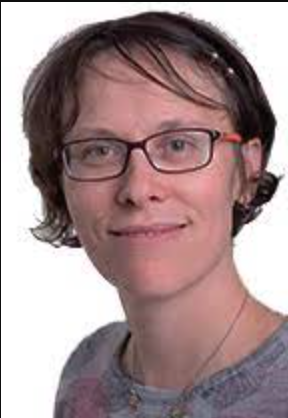Eighteen months after the last in-person SIG workshop took place at Work Microwave, we welcomed the SATCOM industry professionals to the organization's 2022 workshop at Micro-Ant in Jacksonville, Florida, at the end of March.

Hosted by SIG Director Member, Micro-Ant, the hybrid event welcomed more than 70 guests to discuss the latest trends, opportunities and challenges facing the industry. The SATCOM industry is going through a transformative phase, with new technologies and verticals affecting the way we work.
This event definitely promised a lively agenda, with representatives joining from various corners of the space sector to review the current state of the industry and innovation’s role in improving cohesion.
Day 1
Leading the workshop was a heartfelt tribute by Andreas Voigt after the recent loss of his colleague, Simon Gray. Hugely liked and respected by all at SIG, we wish to echo Andreas’ kind words and send our sympathies to Simon’s family.
Micro-Ant’s Jim Francis welcomed the group and explained why it stands by SIG’s ethos for driving innovation. With its focus on antenna design and manufacturing, it strongly believes in the use of high-quality products to safeguard RF integrity. It tests every individual antenna to drive accuracy in the ground segment.
Echoing Micro-Ant’s beliefs regarding the importance of quality and testing, QuadSAT CEO, Joakim Espeland, presented his firm's UAS antenna testing and verification testing system to the audience, while the QuadSAT CTO hosted a live demo from Denmark.
It was clear from discussions around RF interference that it continues to be a problem at the ground segment. RFI is facing new challenges, with new technologies introducing new incidents. There was a call to continue focusing on innovation to target the newest areas of RFI incidents and to focus on spectrum within the newest flux of space use.
5G continues to be a significant talking point within the industry. Beyond the need for intelligent spectrum sharing and its impact on the ground segment and RFI, discussions around the opportunities for satcom within 5G.
The satellite industry’s high throughput and bandwidth will be hugely important within the 5G network; SATCOM will be needed to deliver backhaul services. Additionally, satcom’s wide geographical range will help to deliver breadth to 5G’s hardware heavy infrastructure and rollout.
Beyond backhaul, the SATCOM industry must focus on positioning itself to fit within the wider communications network. The question was raised: what do we need to do to make it possible for satellite connection layers to become an integral part of the mobile network?
Attendees were keen to focus on Flat Panel Antennas. Popular with consumers, there were queries as to whether FPAs will be able to perform as accurately as their parabolic competitors. It was clear that a cohesive approach to the management of FPAs will allow the industry to benefit from higher quality networks.
Collating information to gather the performance capabilities required by satellite operators to provide the end customers with the best services possible would ensure a coordinated approach. Many agreed that a similar approach to the SOMAP standard for parabolic antennas should be adopted for FPAs.
The evening of the first day saw the presentation of the SIG Awards. Micro-Ant won Innovation of the Year for its successful development of their Ultra-Wide Band (.5GHz) Ka Antenna System.
Kacific Broadband Satellites Ltd. and GuarantCo Ltd. were awarded the Cooperation of the Year award for setting a new, global benchmark in delivering reliable, satellite internet to underserved markets.
Spaceport Cornwall was selected as the Educational Project of the Year award winner for their innovative approach in engaging students of all ages to build a solid future in the space industry.
QuadSAT CEO, Joakim Espeland, won the award for Young Engineer of the Year for developing advanced, drone-based technology, which provides users with a flexible and accurate antenna testing and calibration solution.
This was a great evening which highlighted the best of our industry.
Day 2
The second day brought discussions surrounding Lower Earth Orbit (LEO). Martin Philp discussed the need to address the technical challenges and regulatory processes regarding S-band, especially in terms of LEO.
Bob Potter and Netview presented a LEO case study from Cobham in which he discussed the importance of the ground segment infrastructure. He discussed the importance of gateways ensuring pointing and tracking accuracy, data utilization and minimizing RFI within and between constellations. He also emphasized the critical function of good automation and management of such a complex ground infrastructure.
The agenda progressed to Space Traffic Management, with Toby Nassif of the Space Data Association summarizing the present situation. He pointed out that current systems are not sufficient; often they are not transparent or timely and many operators use different ephermis formula formats, which can lead to a false sense of security.
Toby summarized the function of the Space Data Center and called for improved regulatory input from governments, as well as more inter-operator transparency to enable a coordinated approach to Space Situational Awareness.
Jaroslaw Jaworski of Redwire reiterated the challenges facing the industry regarding space debris. He discussed the debris issues surrounding mega constellations, the increasing risk of the Kessler Effect and the financial impact it is having on operators. He noted in the increase in investment in active space debris removal solutions.
Tim Stevenson from the SKA Observatory discussed the current state of radio astronomy and the challenges being brought by radio noise, especially in LEO and MEO. There is a huge challenge facing radio astronomy’s use of spectrum, its radio quiet zones as well as the limitations to existing protections.
Andrew Williams of the European South Observatory explained the impact of SATCOM on Optical Astronomy. He explained that mega constellations in LEO are having a significant impact on Optical Astronomy and he raised concern that the major growth in numbers of satellites in LEO will continue to increase the chances of image interference caused by satellites illuminated by the sun.
Williams suggested that the satellite industry should participate in developing brightness mitigation solutions, including satellite visors and satellite orientation. He added that there is hardly any current legislation to combat this issue and that this must be addressed.
Within the broadcast industry, IP has been shifting how networks are used. To discuss the role of satellite and IP within broadcast, Chris Clarke of Cerberus Tech discussed the benefits of hybrid satellite/IP workflows to leverage the benefits of both delivery methods. Balancing operational complexity and cost through the technologies could open opportunities to more broadcasters, benefiting both satellite and IP industries for both contribution and distribution.
Following on from IP, discussions turned to the topic of the Cloud and virtualization. The satellite industry needs to be making the move to virtualization — a process that has already started for some in the industry.
Virtualizing the ground segment delivers the cloud-based benefits we have all become accustomed to — low costs, easy expansion, and flexible scalability. The Cloud also delivers improvements within the handling of data; something that will be critical when managing new technologies, such as LEO, 5G and cloud-based RFI data processing.
Paul Isaac of Kratos summarized the working group’s objectives, which is mainly focusing on providing information and education to operators looking to move to cloud-based networks.
Workshop Outlook
It is clear that the industry is delivering many innovative solutions in response to the latest set of challenges to SATCOM as it strides toward the huge changes that sometimes seem to be occurring each day within the industry and the necessity of ensuring communication channels remain open between all market segments.
It was brilliant to see in-room discussions occur, with informative opinions from different areas of the various sectors that are shaping the future of SATCOM innovation.
 Helen Weedon
Helen Weedon
The next workshop takes place at SES in Luxembourg from 18th to 19th October. More information available here - https://satig.space/eventlist/sig-october-22-workshop/
Author Helen Weedon is the Managing Director of the Satcoms Innovation Group.


